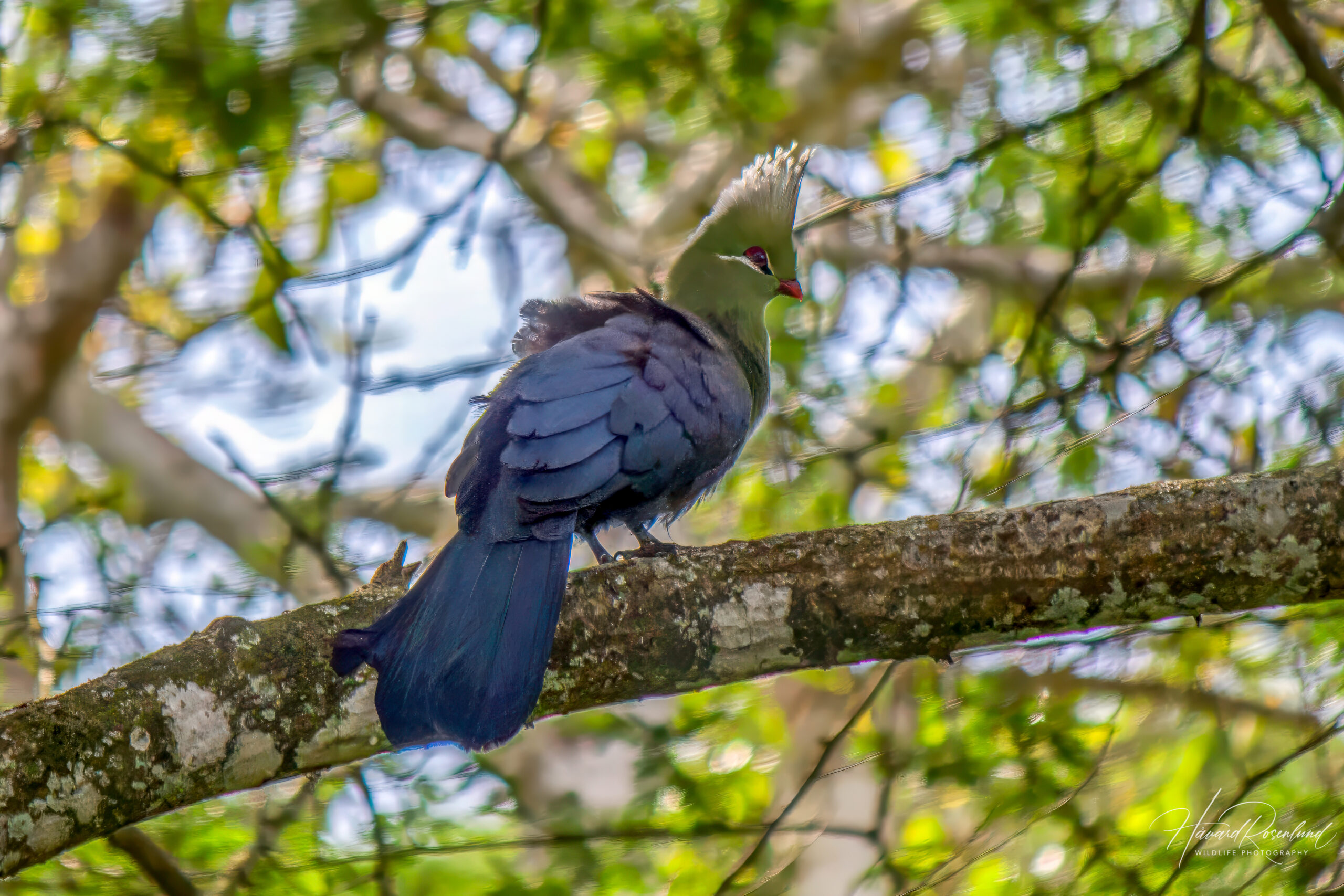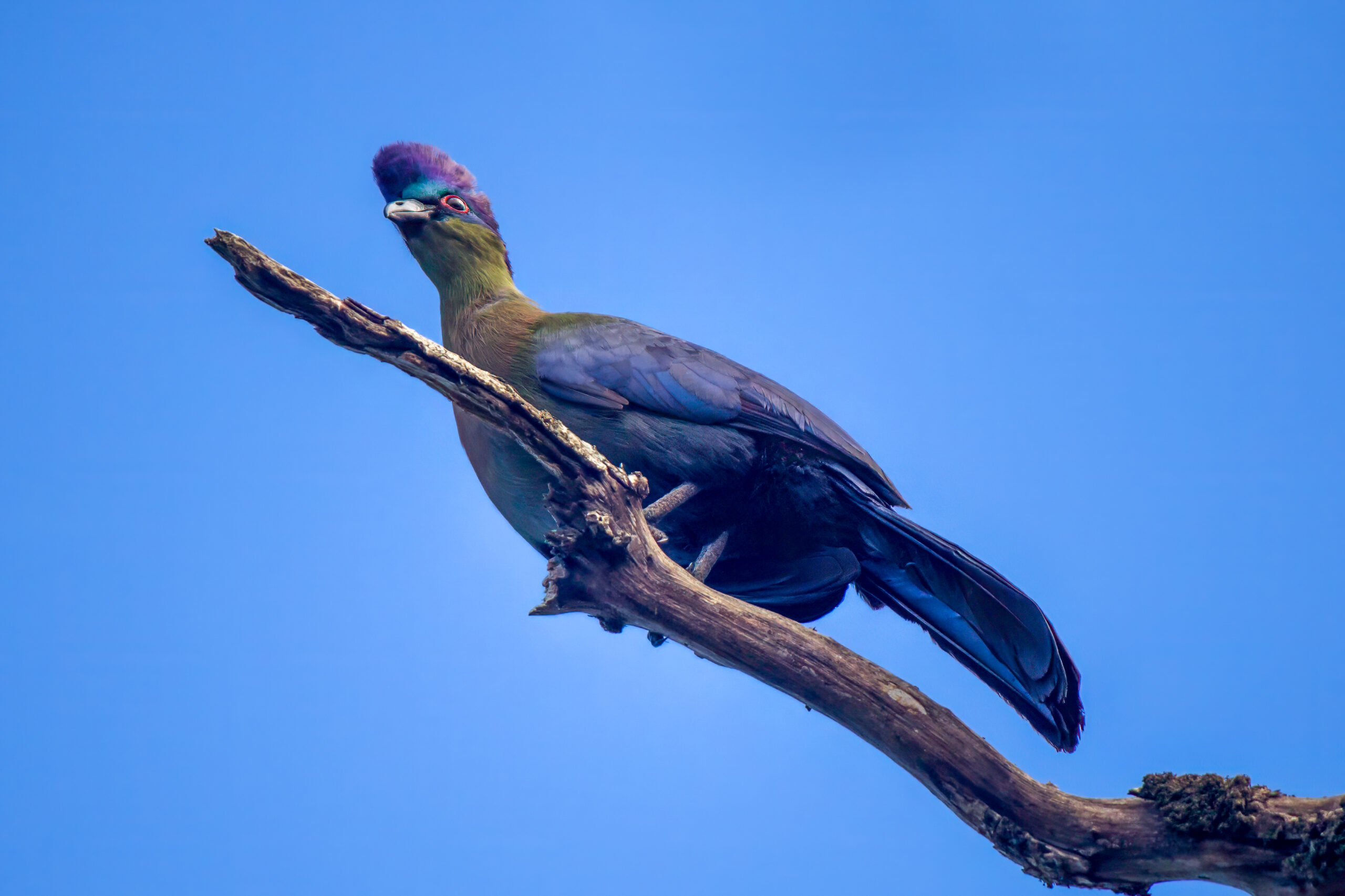Description
The Livingstone’s turaco (Tauraco livingstonii) is a vibrant and eye-catching bird species found primarily in the southeastern regions of Africa, ranging from Tanzania to northeast South Africa (with an isolated population in Burundi). This species is recognized for its distinctive size and features, with an average length of about 40 to 45 centimeters (15.7-17.7 inches). It boasts a striking green plumage, a noticeable crest with white edges, a red eye ring (with black and white markings surrounding the eyes), and red wing coverts which are particularly noticeable in flight. The turaco family is one of the few bird groups with true red and green pigmentation in their feathers, due to the presence of turacins and turacoverdins, pigments not found in any other bird family.
Similar species
There are two species that are very similar to the Livingstone’s turaco; the Knysna turaco (Tauraco corythaix) and the Schalow’s turaco (Tauraco schalowi), and they can be differentiated by their geographical range and crest shape and length. The Knysna turaco, primarily found in the southern coastal forests of South Africa, as well as forests more inland and north towards the Limpopo province, typically has a shorter and more rounded head crest, and the Schalow’s turaco, found more inland in the highland forests of South-Central and East Africa, exhibits a longer and more pointed crest. The crest of the Livingstone’s turaco thus falls in-between the two other species in terms of shape and length.
Diet & habitat
Livingstone’s turaco predominantly inhabits lowland evergreen forests and woodlands, thriving in areas that provide ample foliage for foraging. Its diet primarily consists of fruits, particularly those of native trees and shrubs. This bird species is known for its unique feeding habits, where it uses its agile movements to navigate through dense foliage in search of fruit. The dense forest canopy not only provides food but also protection from predators. These birds are somewhat elusive and shy, making them a prized sighting for birdwatchers.
Nesting
The breeding season of Livingstone’s turaco typically occurs during the wetter months, aligning with the availability of food resources. They are known to build their nests in the dense foliage, using twigs and leaves to construct a relatively flat platform. The female usually lays two eggs, and both parents are involved in the incubation process, which lasts about 22 to 25 days. The fledging period, the time when the chicks grow enough to be able to fly, is approximately 4 weeks. During this time, both parents actively feed and protect the fledglings until they are independent enough to survive on their own.
Status
The Livingstone’s turaco has a wide distribution along the east coast of sub-Sharan Africa. However, like many wildlife species, it faces threats due to habitat loss and fragmentation, primarily caused by human activities such as deforestation and land conversion for agriculture. Because of this it is believed to be decreasing in numbers. It is currently classified as least concern on the IUCN Red List.







